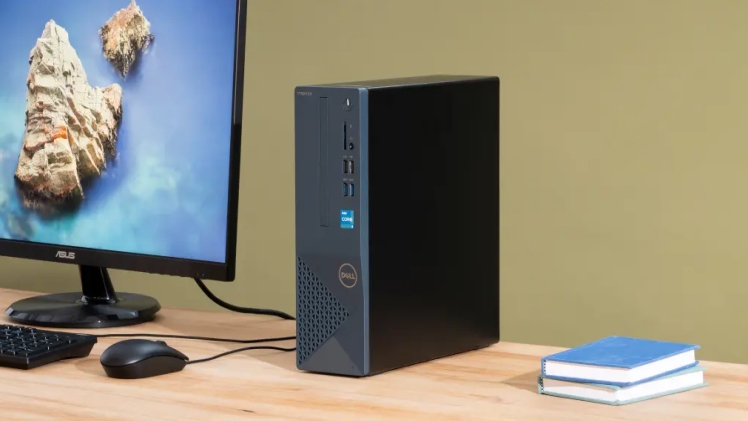In the expansive universe of computing, the term “desktop” holds a crucial place. It is not merely a physical piece of furniture, but a concept integral to the way we interact with and organize our digital lives. The desktop, in computer terminology, refers to an essential component of the graphical user interface, acting as a virtual workspace that mirrors the functionality of a physical desk, albeit in the digital realm. Its significance extends far beyond a mere space for icons; it shapes our understanding of digital organization, access, and interaction.
Origins and Evolution:
The concept of the desktop in computing can be traced back to the 1970s with the development of graphical user interfaces (GUIs). Early computer systems primarily used command-line interfaces, requiring users to input text commands to perform tasks. However, with the introduction of GUIs, such as the Xerox Star in the late 1970s and the iconic Apple Macintosh in the 1980s, the idea of a graphical desktop interface took root.
This graphical representation mimicked a physical desktop, complete with icons that symbolized various functions and objects. Users could interact with these icons, open and organize files, and access applications in a more intuitive and visually comprehensible manner, revolutionizing how people interacted with computers.
The Digital Workspace:
The desktop serves as a digital workspace, providing users with a familiar and accessible platform to interact with their computer. It typically consists of a background image, upon which icons, folders, shortcuts, and widgets are placed. These elements offer a visual representation of files, applications, and functions available on the computer, allowing users to organize and access them with ease.
The user’s ability to personalize their desktop, such as choosing the background image, arranging icons, and using widgets like clocks or weather updates, provides a sense of individuality and convenience. It acts as a command center for digital activities, reflecting the user’s preferences and workflow.
Functionality and Organization:
The desktop’s primary function is to enable quick and easy access to files and applications. Users can place shortcuts or alias icons representing various files, folders, or programs on the desktop for convenient access. By double-clicking these icons, users can launch applications, open documents, or navigate to folders, streamlining their workflow.
Organization is key to an effective desktop. Users can arrange icons and folders in a manner that suits their workflow, creating a system that best matches their habits and preferences. This customization empowers users to maintain a tidy and efficient workspace, facilitating productivity and ease of use.
Digital Evolution and Adaptation:
The concept of the desktop has evolved significantly over time. It has expanded beyond traditional personal computers to encompass laptops, tablets, and mobile devices. These devices have their own versions of the desktop, adapted to suit their form factors and touch-based interactions. The modern mobile “home screen” essentially functions as a compact version of the traditional desktop, housing app icons and widgets for quick access.
Moreover, advancements in technology have ushered in virtual desktops and cloud-based services, allowing users to access their desktop environments from multiple devices. Remote desktop services enable users to log into their personal desktops from different locations, enhancing accessibility and continuity of work.
Challenges and Alternatives:
While the desktop remains a cornerstone of digital organization, new trends and challenges have emerged. Some users prefer minimalistic or clean desktops, eschewing the clutter of icons for a streamlined workspace. Additionally, search-based interfaces and voice-controlled assistants have provided alternatives to the traditional desktop layout, allowing users to access applications and files without relying on icon-based interaction.
Security and Privacy Concerns:
The desktop, being the primary access point to files and applications, also poses security challenges. Unauthorized access, malware, or phishing attacks may compromise the desktop, leading to data breaches or system vulnerabilities. Ensuring the security of the desktop environment is crucial, often involving antivirus software, firewalls, and best practices in cybersecurity.
Privacy concerns also arise from the desktop environment, especially with sensitive information stored on devices. Users must be vigilant in securing their desktops, setting strong passwords, and implementing encryption measures to safeguard their data.
Conclusion:
The concept of the desktop in computing serves as a fundamental and indispensable feature, defining how users interact with digital environments. It embodies accessibility, organization, and personalization, providing a familiar and functional workspace. Its evolution from traditional personal computers to various devices and remote access platforms showcases its adaptability and continued relevance in a dynamic digital landscape.
While the concept of the desktop has faced challenges and alternative interfaces, its core functionality remains robust. It continues to be an essential element in user experience and productivity, providing a foundational platform for accessing and organizing digital content. As technology continues to evolve, the desktop’s adaptation and relevance in shaping the digital workspace will undoubtedly persist, maintaining its position as a fundamental aspect of computing.

